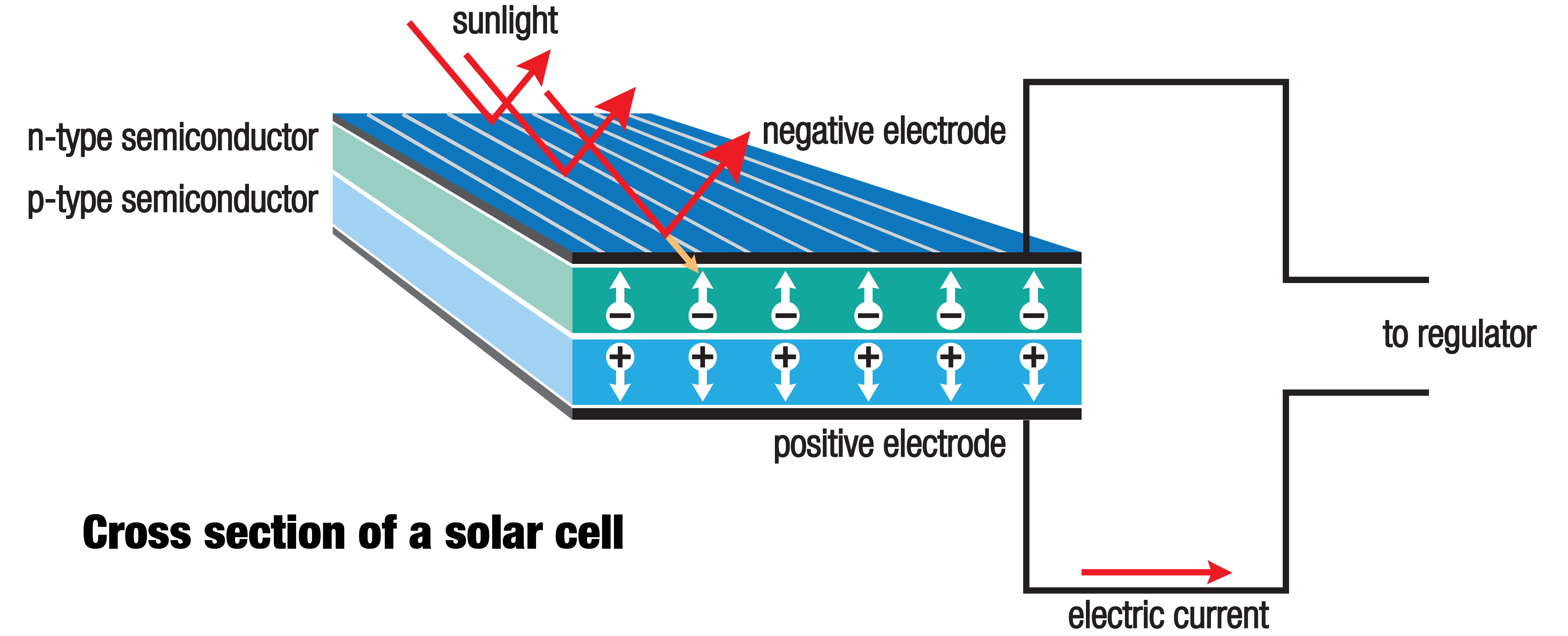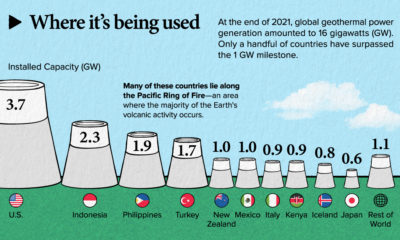Since then, solar has come a long way. Not only has the cost of producing solar panels dropped like a rock, manufacturers are now routinely pumping out new innovations such as flexible solar cells, ultra-thin cells, and transparent photovoltaic windows. These could be game-changers for the industry, adding to the already incredible 39% annual growth occurring in U.S. solar capacity between 2013-2017.
Animated Infographic: How Solar Panels Work
Today’s infographic comes from SaveOnEnergy, and it covers the science behind how solar panels work. While it is fairly technical, the handy animations will help you understand the principles behind photovoltaic cells in no time at all.
In terms of our understanding of how different energy sources work, perhaps the photovoltaic effect is one of the least intuitive processes for the average person to comprehend. After all, something like capturing wind energy is much more straightforward. The wind spins a turbine, and that turbine generates electricity. But solar panels have no moving parts. So how do these thin, glassy arrays turn sunlight into energy we can use? Each solar cell is made of multiple layers. The top semiconductor is a negative layer, which means the material contains extra electrons. The sun’s energy “shakes” these electrons loose, and these electrons become naturally attracted to the bottom semiconductor layer, which is positively charged. The design of the cell forces electrons to move in a specific direction, creating an electrical current.
Why are solar panels getting so much cheaper? Technological advances have made cells more efficient in using the photovoltaic effect to create electricity, and manufacturing processes are improving as well. Interestingly, in the future, it is expected that cost reductions will be tilted more to “soft” costs such as those related to the financing, permitting, and selling of solar projects. on
#1: High Reliability
Nuclear power plants run 24/7 and are the most reliable source of sustainable energy. Nuclear electricity generation remains steady around the clock throughout the day, week, and year. Meanwhile, daily solar generation peaks in the afternoon when electricity demand is usually lower, and wind generation depends on wind speeds.As the use of variable solar and wind power increases globally, nuclear offers a stable and reliable backbone for a clean electricity grid.
#2: Clean Electricity
Nuclear reactors use fission to generate electricity without any greenhouse gas (GHG) emissions.Consequently, nuclear power is the cleanest energy source on a lifecycle basis, measured in CO2-equivalent emissions per gigawatt-hour (GWh) of electricity produced by a power plant over its lifetime. The lifecycle emissions from a typical nuclear power plant are 273 times lower than coal and 163 times lower than natural gas. Furthermore, nuclear is relatively less resource-intensive, allowing for lower supply chain emissions than wind and solar plants.
#3: Stable Affordability
Although nuclear plants can be expensive to build, they are cost-competitive in the long run. Most nuclear plants have an initial lifetime of around 40 years, after which they can continue operating with approved lifetime extensions. Nuclear plants with lifetime extensions are the cheapest sources of electricity in the United States, and 88 of the country’s 92 reactors have received approvals for 20-year extensions. Additionally, according to the World Nuclear Association, nuclear plants are relatively less susceptible to fuel price volatility than natural gas plants, allowing for stable costs of electricity generation.
#4: Energy Efficiency
Nuclear’s high energy return on investment (EROI) exemplifies its exceptional efficiency. EROI measures how many units of energy are returned for every unit invested in building and running a power plant, over its lifetime. According to a 2018 study by Weissbach et al., nuclear’s EROI is 75 units, making it the most efficient energy source by some distance, with hydropower ranking second at 35 units.
#5: Sustainable Innovation
New, advanced reactor designs are bypassing many of the difficulties faced by traditional nuclear plants, making nuclear power more accessible.
Small Modular Reactors (SMRs) are much smaller than conventional reactors and are modular—meaning that their components can be transported and assembled in different locations. Microreactors are smaller than SMRs and are designed to provide electricity in remote and small market areas. They can also serve as backup power sources during emergencies.
These reactor designs offer several advantages, including lower initial capital costs, portability, and increased scalability.
A Nuclear-Powered Future
Nuclear power is making a remarkable comeback as countries work to achieve climate goals and ultimately, a state of energy utopia. Besides the 423 reactors in operation worldwide, another 56 reactors are under construction, and at least 69 more are planned for construction. Some nations, like Japan, have also reversed their attitudes toward nuclear power, embracing it as a clean and reliable energy source for the future. CanAlaska is a leading exploration company in the Athabasca Basin, the Earth’s richest uranium depository. Click here to learn more now. In part 3 of the Road to Energy Utopia series, we explore the unique properties of uranium, the fuel that powers nuclear reactors.






























